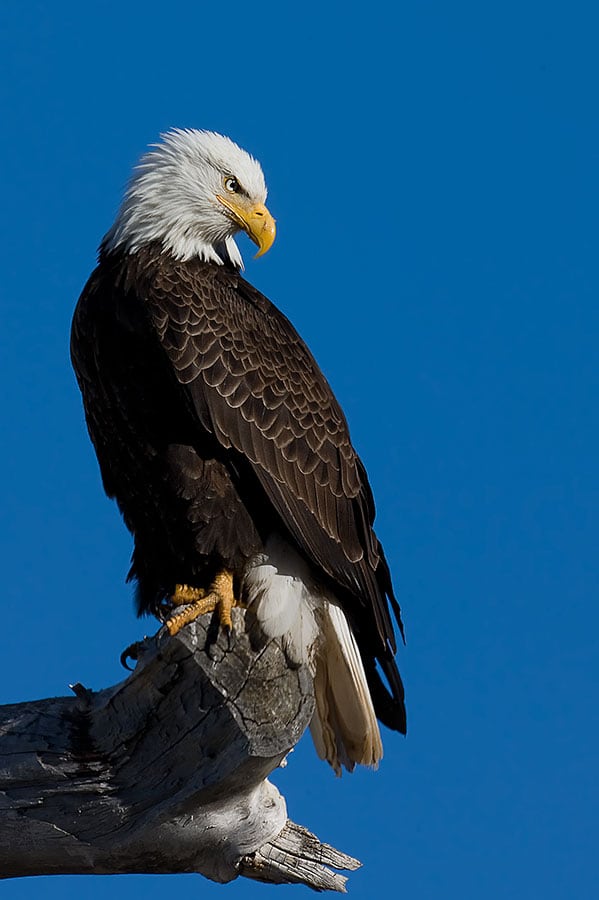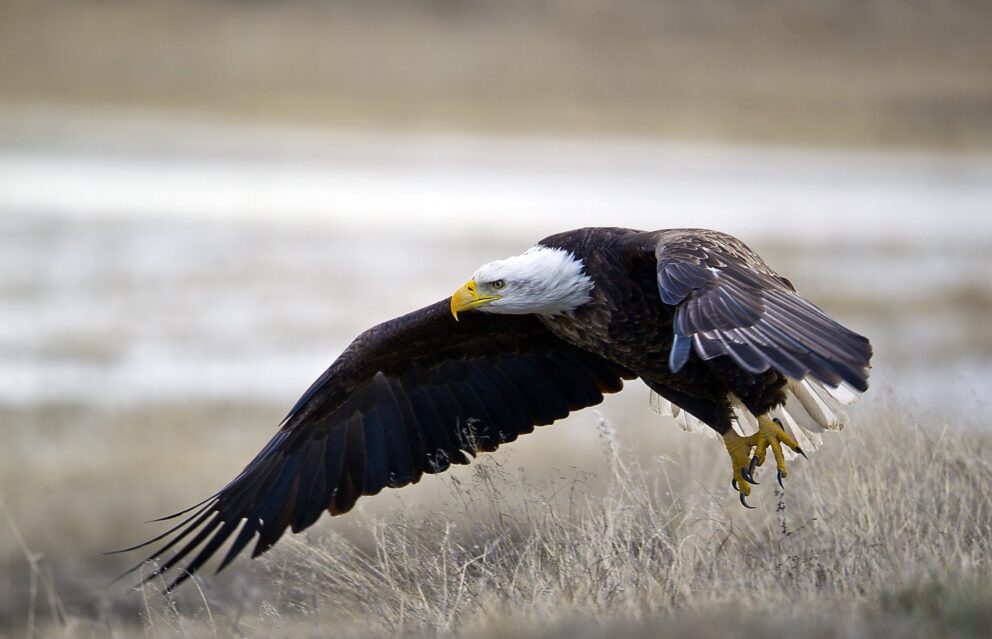- SCIENTIFIC NAME
- Haliaeetus leucocephalus
- CLASSIFICATION
- Bird
- LIFE SPAN
- 15-30 Years
- SIZE
- 28-38” | 6.5-13.8lbs
- STATE CONSERVATION STATUS
-
- Priority Species
- State Protected
- FEDERAL CONSERVATION STATUS
- Least Concern
- GAME STATUS
- Non-Game
- GAME TYPE
- None
- Washoe
- Humboldt
- Pershing
- Churchill
- Mineral
- Lyon
- Douglas
- Carson City
- Storey
- Elko
- Lander
- Eureka
- White Pine
- Esmeralda
- Nye
- Lincoln
- Clark
Habitat & Range
Bald Eagles winter throughout the state of Nevada, and breed in a few areas near Lake Tahoe and the Colorado River.
- Lakes and reservoirs
- Rivers and streams
- Upland Forests
Threats
- Destruction of Nesting Habitat
- Lead Poisoning
- Urban Development
- Urban Expansion
Natural History
Fish makes up a heavy part of the Bald Eagle diet, which explains why they must nest in vicinity to water sources. However, their diet can be supplemented by small mammals, amphibians, small birds, and crustaceans, alive or dead. Bald eagle nests are exceptionally large, some of the largest nests in the avian world. They use sticks and pliable branches to weave together a nest and may add to it in following years. Pairs may have one to three offspring per brood that hatch with down feathers.
Fun Facts
Bald Eagle calls are weak and squeaky sounding. Movies that feature Bald Eagles usually have a Red-tailed Hawk call because they have a more robust call. The Bald Eagle mating ritual involves pairs locking talons and spiraling downward in flight, breaking apart before hitting the ground.














